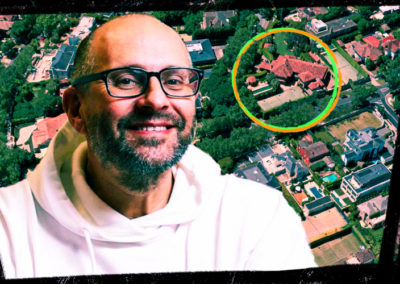Gina Rinehart has been on the Rich List for 28 years – and is now the wealthiest person in Australia – but the iron ore magnate only made it onto the Secret Rich List of elite “grandfathered” companies when she bought Dark Company S. Kidman & Co in 2016.
| Top 200 Rich List (2020) | No. of Dark Companies: 1 | Political Donations since FY 1998-99 |
|---|---|---|
| Rank: 1 | S. Kidman & Co Pty Ltd | Labor Party: $137,800 |
| Wealth: $28.9b | Coalition: $297,530 | |
| Wealth (2019): $13.81b | Independent: $0 | |
| YoY wealth change: 109.2% | Total: $435,330 |
Rinehart gained her wealth through the resources industry at the helm of Hancock Prospecting, the privately-owned iron ore explorer turned miner which was founded by her father, Lang Hancock. In November 2020, Hancock Prospecting reported a 50% increase in profit as ore prices soared.
She is now a dominant figure in agriculture too. Her Dark Company S. Kidman & Co is one of, if not the largest beef producer in the country with over 170,000 cattle. The billionaire purchased the Australian cattle empire for $386.5 million in December 2016 with her majority-owned joint-venture company Australian Outback Beef.
Rinehart is possibly the biggest individual taxpayer in Australia. Although her personal tax returns are not public, her company Hancock Prospecting alone has paid $2.3bn in corporate income tax over the six years of available Tax Office transparency data.
Her track record on corporate compliance has not been quite so flash. Hancock was one of three companies owned by the mining magnate that was fined $130,000 for failing to lodge financial reports on time with the corporate regulator ASIC. On one occasion, Hancock Prospecting submitted its annual report 785 days late.
Ironically, it was during the period of compliance breaches that Hancock Prospecting lobbied ASIC to get the grandfathered exemption from lodging financial reports so her company would not have to report.
The company’s lawyers argued, “the information contained in the financial statements could be used by larger firms in commercial negotiations”.
When ASIC denied their request in March 2012, Rinehart sought a review by the Administrative Appeals Tribunal. Although Hancock and Gina Rinehart’s other companies did not win the grandfathering exemption, she did get on the list via her acquisition of cattle group Kidman.
Staff writers who have worked on one or more of our special investigative projects include Zacharias Zsumer (War Powers), Stephanie Tran, Tasha May and Luke Stacey.


































